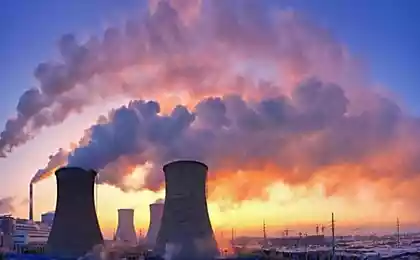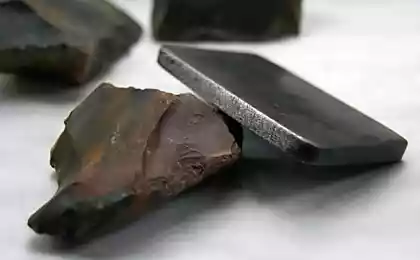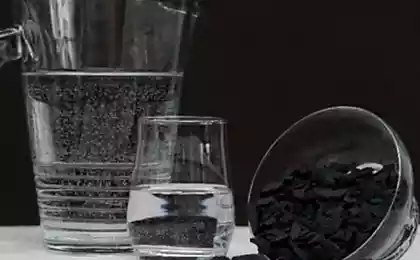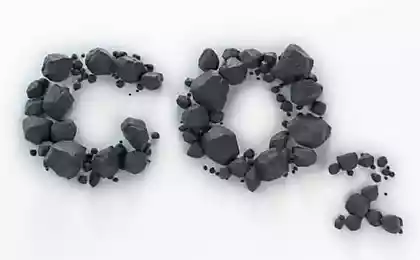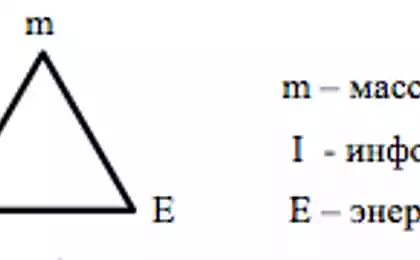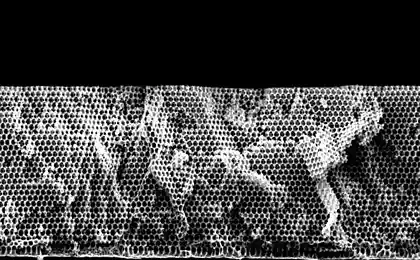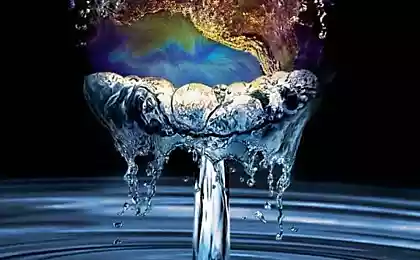525
Converting water and CO2 into fuel
Researchers are trying to reproduce the natural process of photosynthesis. If successful, we will be able to benefit from emissions of carbon dioxide from power plants and industrial enterprises. Thus, industrial enterprises do not need to install new auxiliary installations for processing carbon dioxide. Researchers from National laboratories Sandia has developed a prototype device that uses solar energy to convert water and carbon dioxide into the molecular building blocks that can be used as a vehicle fuel. Would be a great service to the environment, if researchers can make this device produce two times more energy than during the natural process of photosynthesis. This will pave the way for disposal of CO2.
Until now, devices that mimic the process of photosynthesis has not had much success. But this fall presented the device is assembled by hand, has been tested. Rich Deaver researcher and the inventor of the device, says: “ the prototype, which we appreciate, first of its kind”.

James Miller, a chemical engineer from the advanced materials laboratory Sandia says: “in a short time we see this device as an alternative to reducing emissions.” Miller believes that it is possible to convert carbon dioxide into fuel, if you pump CO2 underground in stable storage and use a large amount of solar energy for “back-burning”. Miller adds: “for the effective utilization of CO2 can be obtained from the coal and brewery, and similar concentrated sources.”
The device resembles a cylinder and is called a regenerative heat exchanger of the cumulative reactor rings with counter-rotating(CR5). The device depends on the concentration of the sun's heat to activate the thermo-chemical reaction in the rich iron composite material. The material is designed in such a way that when exposed to high temperatures, it gives up oxygen molecules, and when the cooling gets them back.
The device has two cameras, one on each side. One side hot, one cold. In the centre ─ a number of the 14 rings, similar to playing Frisbee rotating at a speed of one revolution per minute. The outer edge of each ring contains iron oxide supported zirconium compound matrix. Scientists have also established a concentrator of solar radiation for heating up to 1500 ° C within a single camera. This leads to the fact that the iron oxide gives up oxygen molecules on one side of the ring. Now vozdeystviyna side of the ring rotates to the opposite chamber. It gradually loses heat, and carbon dioxide ends. This cooling allows the iron oxide to bring oxygen molecules from the CO2, leaving behind carbon monoxide. The process is repeated continuously using the incoming supply of CO2 and release a flow of carbon monoxide.
Miller believes that using the same process to produce hydrogen. The only difference is that instead of carbon dioxide, the second chamber will be pumped water. Two gases, namely hydrogen and carbon monoxide, can then be mixed to make syngas. This synthetic gas can be used as replacements for traditional fuels.

Deaver planned hydrogen power, when he originally developed the device. He wanted to eliminate the inefficiency of electrolysis and use the solar heat engine that could directly produce hydrogen and oxygen. This will reduce the use of electricity as an intermediary. The same approach is used by researchers in Japan, France and Germany. But the Sandia team soon realized the disadvantage of the process as it was in the conversion of CO2 into carbon monoxide. They are paving the way to reduce the harmful effects of consumed fossil fuels. Their device will limit the impact on the environment from burning coal and natural gas for electricity production and other industrial processes.
Deaver understood that his device would benefit the common man, it needs to increase the efficiency of the system. If the Sandia team can demonstrate higher efficiency, Vladimir Krstic says it can be a significant step forward. Vladimir Krstic is the Director of the center for the production of advanced ceramics and nanomaterials at Queen's University, Kingston, Ontario.
Scientists believe that people should wait at least 15 to 20 years before the technology is ready for market. They plan to develop every three years a prototype of the new generation to show an increase in conversion efficiency of the solar fuel and reduce the cost. They want to achieve the above goal by developing new ceramic composites that release oxygen molecules at lower temperatures. This will help to convert more solar energy into hydrogen or carbon monoxide.
Miller States: “our short-term goal is to increase the efficiency by a few percent. This may seem a small number, but it is comparable to photosynthesis, which is actually a very inefficient way of using solar light.” He also points out the disadvantage of this process is that the theoretical maximum efficiency of photosynthesis-approximately 5 percent, but in the real world it falls to about 1 percent. He clearly defines his goals: “perhaps the beginning is very weak, but we want to continue to work due to the fact that already surpassed. We believe that ultimately, you can get within 10 percent of the fuels from sunlight, and we're far from that.”published
Source: www.alternative-energy-news.info/converting-water-co2-fuel/
Until now, devices that mimic the process of photosynthesis has not had much success. But this fall presented the device is assembled by hand, has been tested. Rich Deaver researcher and the inventor of the device, says: “ the prototype, which we appreciate, first of its kind”.

James Miller, a chemical engineer from the advanced materials laboratory Sandia says: “in a short time we see this device as an alternative to reducing emissions.” Miller believes that it is possible to convert carbon dioxide into fuel, if you pump CO2 underground in stable storage and use a large amount of solar energy for “back-burning”. Miller adds: “for the effective utilization of CO2 can be obtained from the coal and brewery, and similar concentrated sources.”
The device resembles a cylinder and is called a regenerative heat exchanger of the cumulative reactor rings with counter-rotating(CR5). The device depends on the concentration of the sun's heat to activate the thermo-chemical reaction in the rich iron composite material. The material is designed in such a way that when exposed to high temperatures, it gives up oxygen molecules, and when the cooling gets them back.
The device has two cameras, one on each side. One side hot, one cold. In the centre ─ a number of the 14 rings, similar to playing Frisbee rotating at a speed of one revolution per minute. The outer edge of each ring contains iron oxide supported zirconium compound matrix. Scientists have also established a concentrator of solar radiation for heating up to 1500 ° C within a single camera. This leads to the fact that the iron oxide gives up oxygen molecules on one side of the ring. Now vozdeystviyna side of the ring rotates to the opposite chamber. It gradually loses heat, and carbon dioxide ends. This cooling allows the iron oxide to bring oxygen molecules from the CO2, leaving behind carbon monoxide. The process is repeated continuously using the incoming supply of CO2 and release a flow of carbon monoxide.
Miller believes that using the same process to produce hydrogen. The only difference is that instead of carbon dioxide, the second chamber will be pumped water. Two gases, namely hydrogen and carbon monoxide, can then be mixed to make syngas. This synthetic gas can be used as replacements for traditional fuels.

Deaver planned hydrogen power, when he originally developed the device. He wanted to eliminate the inefficiency of electrolysis and use the solar heat engine that could directly produce hydrogen and oxygen. This will reduce the use of electricity as an intermediary. The same approach is used by researchers in Japan, France and Germany. But the Sandia team soon realized the disadvantage of the process as it was in the conversion of CO2 into carbon monoxide. They are paving the way to reduce the harmful effects of consumed fossil fuels. Their device will limit the impact on the environment from burning coal and natural gas for electricity production and other industrial processes.
Deaver understood that his device would benefit the common man, it needs to increase the efficiency of the system. If the Sandia team can demonstrate higher efficiency, Vladimir Krstic says it can be a significant step forward. Vladimir Krstic is the Director of the center for the production of advanced ceramics and nanomaterials at Queen's University, Kingston, Ontario.
Scientists believe that people should wait at least 15 to 20 years before the technology is ready for market. They plan to develop every three years a prototype of the new generation to show an increase in conversion efficiency of the solar fuel and reduce the cost. They want to achieve the above goal by developing new ceramic composites that release oxygen molecules at lower temperatures. This will help to convert more solar energy into hydrogen or carbon monoxide.
Miller States: “our short-term goal is to increase the efficiency by a few percent. This may seem a small number, but it is comparable to photosynthesis, which is actually a very inefficient way of using solar light.” He also points out the disadvantage of this process is that the theoretical maximum efficiency of photosynthesis-approximately 5 percent, but in the real world it falls to about 1 percent. He clearly defines his goals: “perhaps the beginning is very weak, but we want to continue to work due to the fact that already surpassed. We believe that ultimately, you can get within 10 percent of the fuels from sunlight, and we're far from that.”published
Source: www.alternative-energy-news.info/converting-water-co2-fuel/
Nanocellulose in medicine and ekoprominvest
Sugar: the bitter truth — the main theses of the legendary lecture by Robert Lustig



